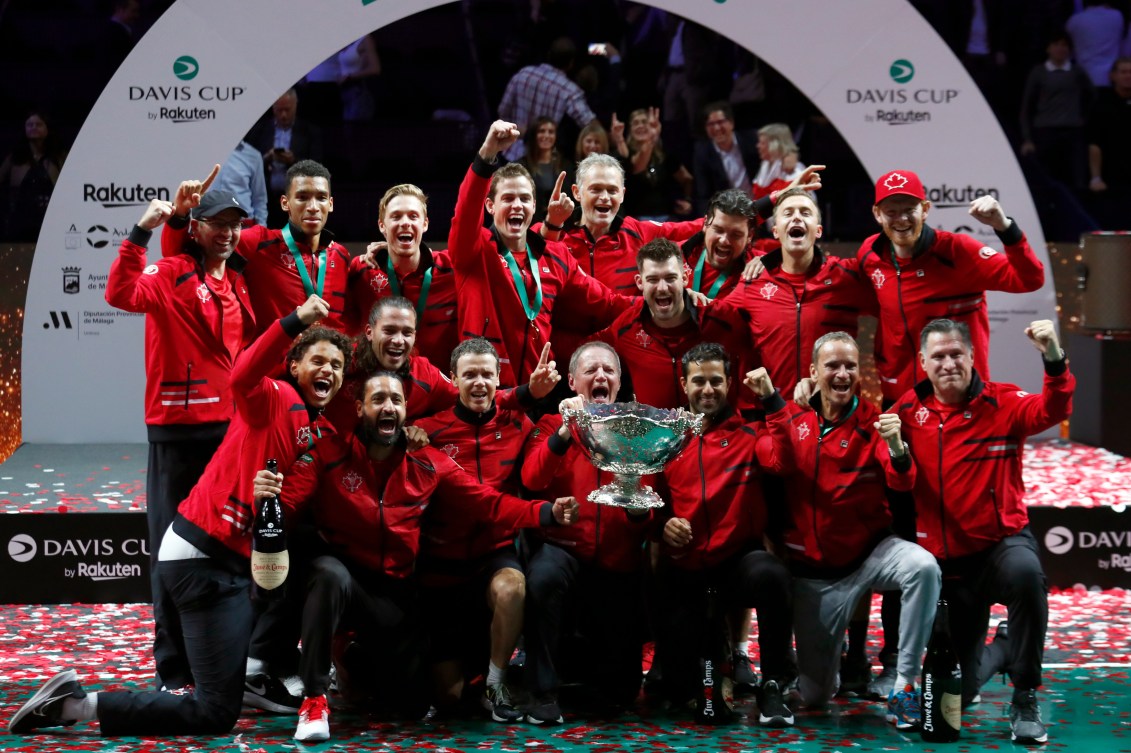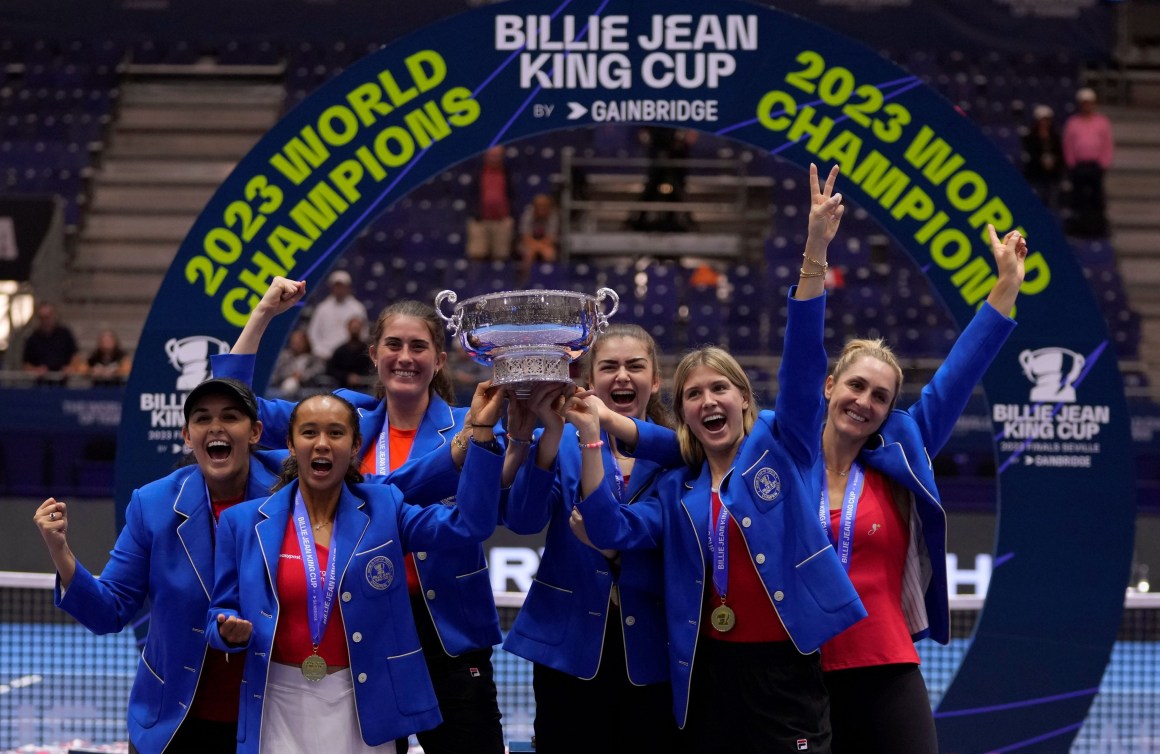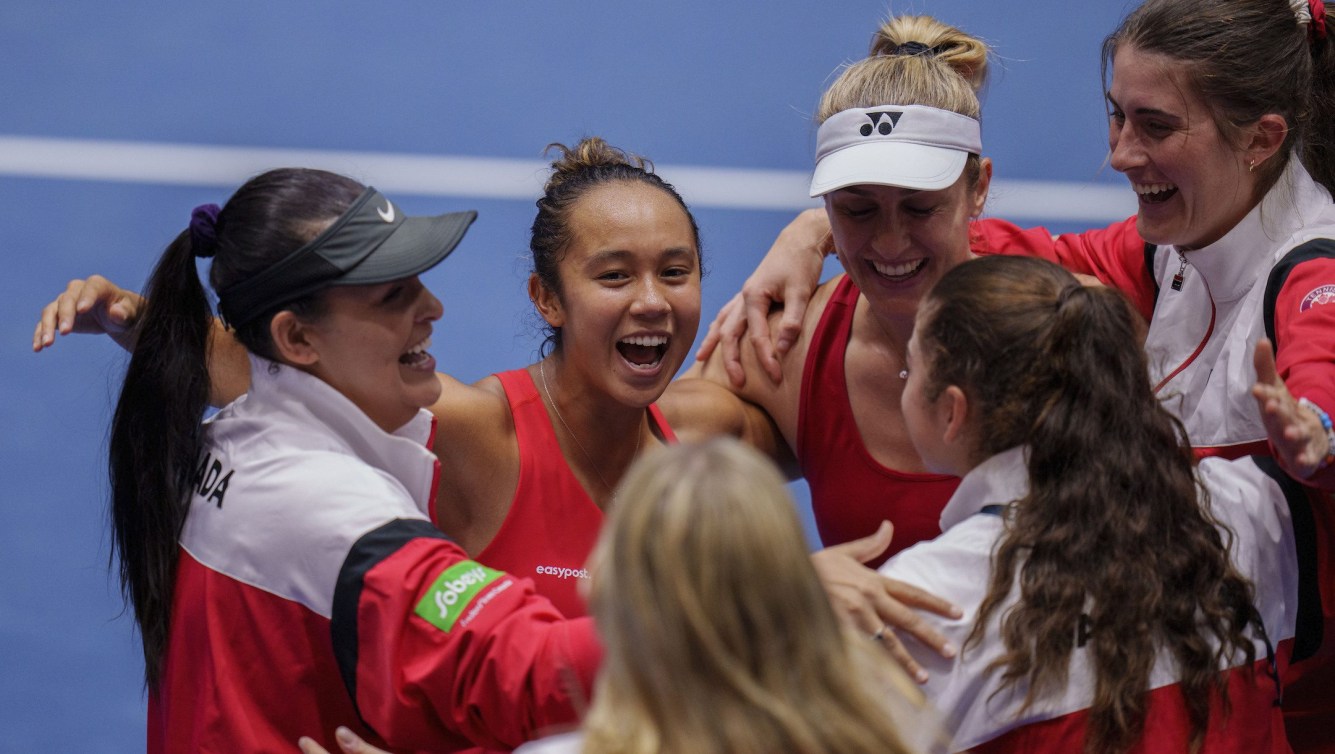FAQ: What are the Davis Cup and Billie Jean King Cup?
This article was updated on September 16, 2024
Tennis is often thought of as an individual sport, but there are times when players come together to represent their country as a team.
The Davis Cup and Billie Jean King Cup are annual highlights on the calendar so here’s what you need to know about them.
What are the Davis Cup and Billie Jean King Cup tournaments?
Davis Cup is the largest annual international team competition in sport, with a record 157 nations participating in 2024. Similarly, the Billie Jean King Cup (formerly known as Fed Cup) is the world’s largest annual international women’s team tournament, with a record 134 nations entered in 2023.
Davis Cup was created when members of the 1900 Harvard University tennis team wanted to arrange a match between USA and Great Britain. One of the American players, Dwight Davis, designed the tournament format and purchased the tournament’s trophy with his own money. His name would become synonymous with the tournament.
The idea of the Fed Cup was brought up in 1919 but did not become a reality until 1963 when it was launched as a way to celebrate the International Tennis Federation’s (ITF) 50th anniversary. Back then it was the Federation Cup before the name was shortened in 1995.
In September 2020, the Fed Cup was renamed after tennis legend, Billie Jean King, who has been a proponent for equality in the sport throughout her career. The tournament bearing her name has the biggest annual prize fund in women’s team sports, matching that awarded in Davis Cup.
Has Canada ever won a Davis Cup or Billie Jean King Cup title?
The short answer for both: yes!
Team Canada made history in 2022 when the country won its first ever Davis Cup title. Félix Auger-Aliassime and Denis Shapovalov each won their singles matches in the final to defeat Australia 2-0 and claim the trophy. Veteran Vasek Pospisil was key in Canada getting to that final, teaming with Auger-Aliassime to win the pivotal doubles match against Italy in the semifinal. Before that, he played doubles alongside Shapovalov in the quarterfinals against Germany, another must-win match.

READ: Team Canada defeats Australia to win first Davis Cup title
It had been Auger-Aliassime and Pospisil who did the heavy lifting during the group stage in 2022 to advance Canada into the knockout stage.
Canada had first entered Davis Cup competition in 1913. Auger-Aliassime, Pospisil, and Shapovalov were the core of the Canadian team that finished as runner-up to Spain in the 2019 Davis Cup Finals.
Almost a year later, Team Canada made more history by winning its first ever Billie Jean King Cup title. Marina Stakusic and Leylah Fernandez each won their singles matches in the final against Italy to claim the trophy for 2023. That followed a 2-1 upset of Czechia in the semifinals in which Fernandez was key, winning both her singles match and the doubles match alongside Gaby Dabrowski.

READ: Fernandez and Stakusic propel Canada to first ever Billie Jean King Cup title
The Canadians had finished atop their group with a 2-0 record. In both of those ties, 18-year-old Stakusic won both of her singles matches — her first time playing in the Billie Jean King Cup.
Team Canada’s previous best finish in Fed Cup/Billie Jean King Cup was in 1988 where they reached the semifinals.
Who is on Canada’s Davis Cup and Billie Jean King Cup teams?
For the Group Stage of the Davis Cup Finals that took place on September 10-15, Team Canada consisted of Félix Auger-Aliassime, Denis Shapovalov, Gabriel Diallo, Alexis Galarneau, and Vasek Pospisil. Playing in Group D in Manchester, England, they faced Argentina, Finland, and Great Britain.
Team Canada topped the Group, led by Shapovalov and Auger-Aliassime, neither of whom lost any of their singles matches. The team will compete in the Davis Cup Final 8 taking place November 19-24 in Malaga, Spain.
Pospisil, Galarneau, and Diallo all contributed to Canada going 3-0 in the group stage of the Davis Cup Finals in September 2023. Galarneau and Diallo had also been part of the 2022 title-winning team, along with Auger-Aliassime, Pospisil and Shapovalov, but did see action in that Final 8. The young duo stepped up in a big way in the absence of Canada’s two highest ranked singles players during the group stage of the 2023 Finals.
Pospisil is the veteran of the squad. The 33-year-old now has 26 Davis Cup nominations and has represented Canada every year since 2011 after making his Davis Cup debut in 2008.
Auger-Aliassime earned his seventh Davis Cup nomination. Shapovalov is on his ninth nomination, while Galarneau and Diallo enjoy their sixth and fifth nominations, respectively.
As the defending Billie Jean King Cup champions, Team Canada earned a bye straight to Malaga, where they will take on the winner between Germany and Great Britain on November 17. Canada will be represented by Bianca Andreescu, Gabriela Dabrowski, Leylah Annie Fernandez, Rebecca Marino, and Marina Stakusic.
Fernandez, Stakusic, Dabrowski and Marino are all returning members of the Billie Jean King Cup team that was victorious last year. Team Canada will seek to be the first team to defend the Cup since Czechia in 2016.
When are Canada’s next Davis Cup and Billie Jean King Cup matchups?
Team Canada advanced to the Final 8 for the Davis Cup by winning Group D against Finland, Great Britain, and Argentina on September 15-18. The Final will take place November 19-24 in Malaga, Spain.
After winning the 2023 Billie Jean King Cup, Team Canada is automatically qualified for the 2024 Finals taking place November 13-20 in Malaga, Spain and have a bye into the quarterfinals.
What is the format for Davis Cup?
Davis Cup took on a new format in 2019 that saw the top 18 teams in the world come together for the Davis Cup Finals in late autumn. That format was adjusted for 2022. The Davis Cup Finals now start with a group stage featuring 16 teams, followed by a knockout stage for the last eight teams standing.
READ: Team Canada advances to 2023 Davis Cup quarterfinals
The Davis Cup Qualifiers take place in February. Each tie between two nations consists of two singles matches and a doubles match on day one followed by two reverse singles matches on day two. The term “rubbers” is used for matches played within a tie. A team has to win three rubbers to win the tie. These rubbers are all best-of-three sets. A team can consist of up to five players, though there is no obligation for all team members to compete in a rubber. A player can compete in a maximum of two singles matches.
For the Finals, the 16 teams are drawn into four groups of four. Each group plays their round robin in a different city. The top two teams in each group advance to the knockout stage, which takes the form of a bracket tournament, starting with quarterfinals. The winners there move onto the semifinals with those victors facing off for the trophy. Each tie during the Finals consists of two singles matches and one doubles match, which are again best-of-three sets.
What is the format for Billie Jean King Cup?
Billie Jean King Cup introduced a new tournament format for 2020 that is somewhat similar to the new-look Davis Cup. The eight-day Billie Jean King Cup Finals take place in November with 12 teams competing for the title.
Eight of those teams advance from the Qualifiers, which take place in the spring. They join the reigning champions, the most recent runners-up, the host nation, and a wild card in the field.
The top four teams get a direct bye to the quarterfinals while the remaining teams are placed in the bracket to play first round ties. All ties in the Finals consist of two singles matches and a doubles match.
The Billie Jean King Cup Qualifiers take place during the spring. Each tie between two nations consists of two singles matches and a doubles match on day one followed by two reverse singles matches on day two.
How do Davis Cup and Billie Jean King Cup impact the Olympics?
To be eligible to compete at the Olympic Games, tennis players must fulfill Davis Cup or Billie Jean King Cup participation requirements. During the four-year cycle leading up to a Games, they must be part of a final nominated Davis Cup or Billie Jean King Cup team and be present at ties/events for their country at least twice and one of those occasions must be in either the year of the Games or the year just before. If a player does not meet this minimum participation requirement, a discretionary decision may be made to allow for nomination to the Olympic team if there are special circumstances at play.












